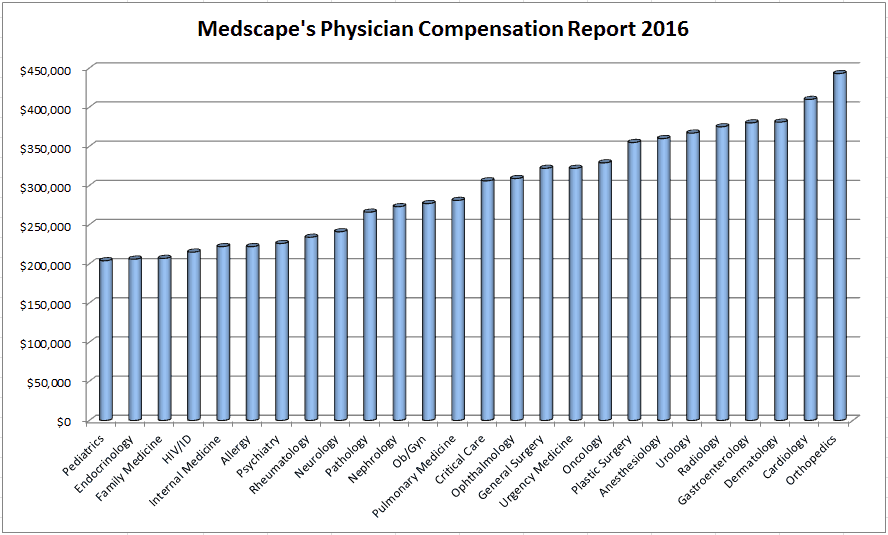One of the most anticipated surveys among the physician community has been released by Medscape. Most specialties saw an increase in compensation between 4% and 12%. Two experienced a significant decrease. Where do you stand?
Over the past 6 years, the Medscape Physician Compensation Report 2016 has evolved with the changing healthcare landscape as questions focus beyond just compensation. “We have spent more time asking questions about the impact of healthcare reform, such as participation in health insurance exchanges, participation in ACOs, and influx of patients due to the affordable care act,” says Leslie Kane, senior director, Medscape Business of Medicine, in an interview with Physician’s Weekly. “We have also focused more on paying attention to how doctors are reacting to changing and falling reimbursement by questioning their attitudes toward insurers.”
Among comparing many facets of practicing medicine, the report, of course, compares compensation. Internal Medicine and Rheumatology saw the highest increases in salary compared to 2015, both at 12%. Following closely were Dermatology and Nephrology at 11% and Ob/Gyn at 10%. Allergy and Pulmonary Medicine were the only specialties to experience compensation decreases—and significant ones—at 11% and 5%, respectively.
Source: Adapted from: Medscape Physician Compensation Report 2016
Michael Smith, MD, medical director and chief medical editor, WebMD, told us that “despite all the negativity we hear about being a physician in today’s medical practice—paperwork, insurance companies, technology challenges, burnout etc—being a doctor is still a satisfying and financially rewarding career overall.” Dr. Smith sites the income increases for both specialists and primary care physicians, particularly Internists who saw a 12% rise in income, and how it is outpacing income increases seen by other American workers.
Like in every career and industry, there are those who are unhappy. But Kane feels the overall message from the survey is a positive one. “We see that 64% would choose medicine again. We also see that their relationships with patients and their ability to find diagnoses and solve problems are still a highly rewarding part of the job,” she says.
Despite being on the lower end of earnings, 73% of family physicians and 71% of internists were at the top of the list of physicians most likely to choose medicine again. Those least likely to choose medicine again are plastic surgeons (47%), radiologists, and orthopedics (both 49%). All three of these specialties were in the top 10 in earnings.
Dr. Smith echoes Kane’s sentiment, encouraged by the findings of the survey. He notes that while paperwork and dealing with insurance companies have taken a toll on physicians, “In the end, the reasons many of us wanted to be a doctor still stand true today. Doctors value their relationships with patients and enjoy diagnosing medical problems and finding answers to those challenges.”
View the full Medscape 2016 Physician Compensation Report




 Janine Anthes
Janine Anthes